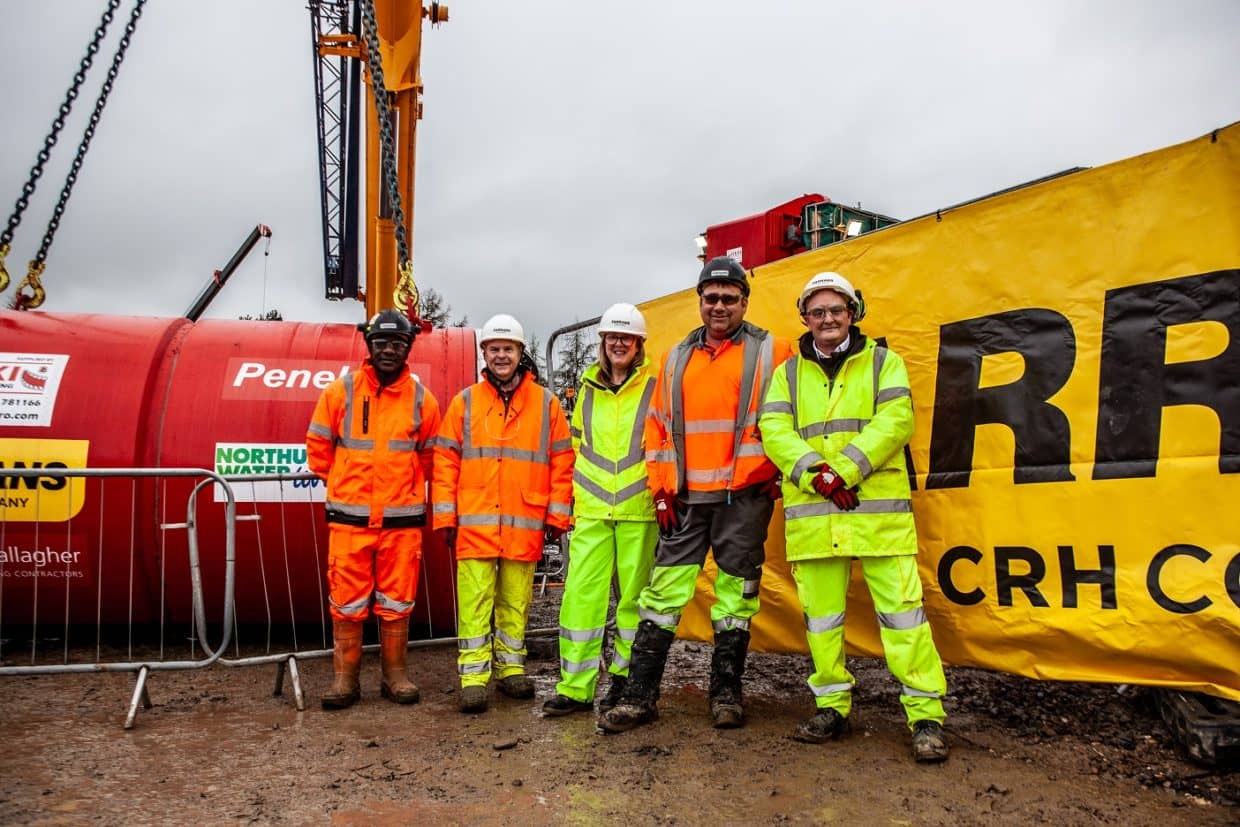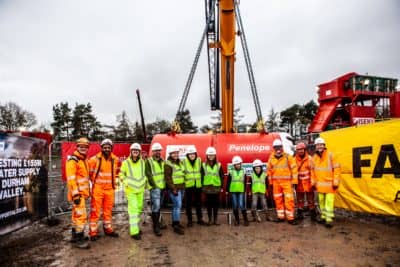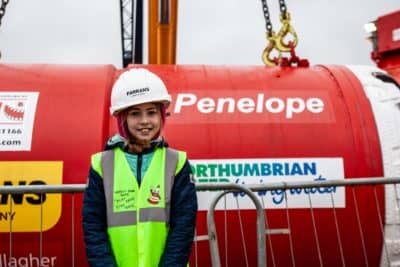
Innovative tunnelling set to begin on Northumbrian Water’s Project Pipeline
Farrans is set to begin innovative tunnelling operations on Northumbrian Water’s Project Pipeline: County Durham and Tees Valley.
A 220m tunnel will be installed beneath the River Tees, near Barnard Castle, to enable a new £155m water pipeline to be constructed while protecting the watercourse and the wildlife that relies upon it.
Northumbrian Water’s Project Pipeline: County Durham and Tees Valley will see the construction of around 57km of new pipes connecting Lartington Water Treatment Works with around 200,000 customers across the south of the North East.
A specialist tunnel boring machine has arrived on site to begin its journey between two specially constructed shafts. This will create a pathway beneath the river, through which the new pipes will be installed.
Phase 1 of the project will connect Lartington, in Upper Teesdale, with Whorley Hill and Shildon, County Durham, and will be followed by a second phase extending the pipeline from Whorley Hill to Long Newton, connecting to the existing network that serves large parts of Teesside.
In recent months, work has been carried out by main contractors Farrans and subcontractors Joseph Gallagher, to create the two shafts, one on either side of the river.
Dave Mellor, Contracts Director for Farrans, said:
“This is an exciting time for the project team as we begin this highly-technical operation under the river. The western shaft is 8.0 metres in diameter and 32 metres deep, while the eastern shaft is 7.5 metres in diameter and 46 metres deep, the difference being due to the rising topography on the east bank.
“A 221-tonne concrete base has been constructed in each shaft – a volume equivalent to 15 wagons of concrete. The 220m journey beneath the Tees will take up to six weeks to complete, going from east to west, before a large crane will lift the machine back out of the eastern shaft.”
James Dawes, Northumbrian Water’s Project Manager said: “This project has been years in the planning and ensuring that key strategic crossings, such as the River Tees, are done in the best way possible for the local environment and communities, has been vital.
“While it would have been possible to cross the Tees using a pipe-bridge, we had to consider such factors as how this would impact the stunning Teesdale landscape that will be here long after our team have completed the project and moved on.
“The use of no dig techniques, tunnelling or directional drilling, is becoming increasingly common in our projects, to reduce the impact on our region’s road and rail networks by reducing the need to dig long trenches. However, this is the first time we have employed it to cross a large river and the teams at Farrans and Joseph Gallagher Limited have done a great job in creating these massive shafts to make this possible.
Project Pipeline: County Durham and Tees Valley is a huge investment in the resilience and quality of water supplies to around 200,000 customers, and there is a lot of work to be done, but this is an exciting and important milestone as we progress this strategically important project towards completion.”
The arrival of the tunnelling machine was greeted by ten-year-old Penny Green, from Cotherstone, who won a competition to name it which was run by Farrans.
She chose the name Penelope – after herself, because “the machine is strong, like her”, and was joined by her family – parents Richard and Kelly, and siblings Toby, Josie and Harry, at the eastern shaft, to see the machine and meet the team.

